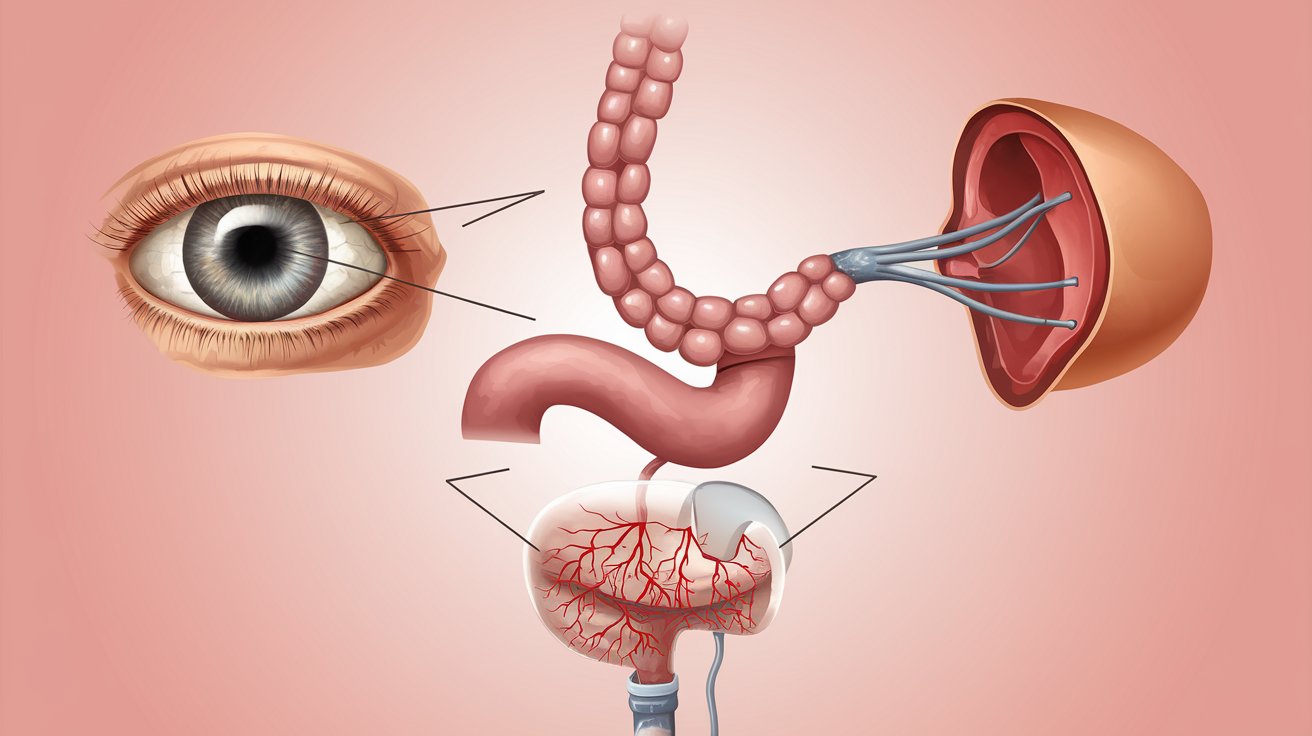
Leiomyomatosis of the esophagus, cataract, hematuria—sounds like a mouthful, right? This rare condition, also known as Reed's Syndrome, affects multiple parts of the body. But what exactly is it? In simple terms, it's a genetic disorder that causes benign tumors in the esophagus, eye lens clouding (cataracts), and blood in the urine (hematuria). Understanding this condition can be challenging, but knowing some key facts can help. From its genetic roots to its symptoms and treatment options, there's a lot to learn. Let's dive into 30 essential facts about this complex syndrome to make it easier to grasp.
Key Takeaways:
- "Leiomyomatosis of Oesophagus Cataract Hematuria is a rare condition combining esophageal tumors, cataracts, and blood in urine. It can affect swallowing, vision, and urinary health, requiring a multidisciplinary approach for diagnosis and treatment."
- "Genetic factors may play a role in this syndrome, with some cases inherited in families. Early detection through medical history, imaging, and eye exams is crucial for managing the condition and improving quality of life."
What is Leiomyomatosis of Oesophagus Cataract Hematuria?
Leiomyomatosis of Oesophagus Cataract Hematuria is a rare condition that combines three distinct medical issues: leiomyomatosis of the esophagus, cataracts, and hematuria. Understanding these components helps in grasping the complexity of this condition.
- Leiomyomatosis refers to the abnormal growth of smooth muscle cells, often forming benign tumors called leiomyomas.
- Cataracts are clouding of the eye's lens, leading to decreased vision.
- Hematuria means the presence of blood in urine, which can indicate various underlying issues.
Facts About Leiomyomatosis
Leiomyomatosis primarily affects the smooth muscles, and in this condition, it specifically targets the esophagus.
- Leiomyomas in the esophagus can cause difficulty swallowing, chest pain, and other gastrointestinal symptoms.
- These tumors are generally benign but can grow large enough to obstruct the esophagus.
- Surgical removal is often required if the tumors cause significant symptoms or complications.
- Genetic mutations are sometimes linked to the development of leiomyomatosis.
- This condition can be part of a syndrome that affects multiple organs, not just the esophagus.
Facts About Cataracts
Cataracts are a common eye condition, but their presence in this syndrome adds another layer of complexity.
- Cataracts can develop at any age but are more common in older adults.
- In this syndrome, cataracts may appear earlier than usual, sometimes even in childhood.
- Symptoms include blurry vision, difficulty seeing at night, and sensitivity to light.
- Surgery is the most effective treatment, involving the removal of the cloudy lens and replacement with an artificial one.
- Genetic factors can also play a role in the early development of cataracts in this syndrome.
Facts About Hematuria
Hematuria, or blood in the urine, is a symptom that can indicate various underlying health issues.
- Hematuria can be visible (gross hematuria) or detectable only under a microscope (microscopic hematuria).
- Causes range from urinary tract infections to more serious conditions like kidney disease or cancer.
- In this syndrome, hematuria may be linked to abnormalities in the urinary tract or kidneys.
- Diagnosis often involves urine tests, imaging studies, and sometimes cystoscopy.
- Treatment depends on the underlying cause and may include antibiotics, medication, or surgery.
Genetic and Hereditary Factors
The combination of these three conditions suggests a possible genetic link.
- Some cases of this syndrome are inherited in an autosomal dominant pattern.
- Genetic testing can help identify mutations associated with the syndrome.
- Family history plays a crucial role in diagnosing and managing the condition.
- Genetic counseling is recommended for affected families to understand the risks and implications.
Diagnosis and Management
Diagnosing this rare syndrome requires a multidisciplinary approach.
- A thorough medical history and physical examination are essential first steps.
- Imaging studies like MRI or CT scans can help visualize leiomyomas in the esophagus.
- Eye exams are crucial for detecting cataracts early.
- Urine tests and kidney function tests are necessary for identifying hematuria and its causes.
- Management often involves a team of specialists, including gastroenterologists, ophthalmologists, and urologists.
Treatment Options
Treatment varies based on the severity and symptoms of each component of the syndrome.
- Surgical removal of leiomyomas may be necessary to relieve esophageal obstruction.
- Cataract surgery can restore vision and improve quality of life.
- Addressing hematuria involves treating the underlying cause, whether it's an infection, kidney issue, or other condition.
Final Thoughts on Leiomyomatosis of Oesophagus Cataract Hematuria
Leiomyomatosis of Oesophagus Cataract Hematuria is a rare condition that combines multiple health issues. Understanding its symptoms and treatment options is crucial for managing the disease effectively. Early diagnosis can make a significant difference in the quality of life for those affected. Regular check-ups and consultations with specialists are essential.
Staying informed about the latest research and advancements can also provide hope and better management strategies. Support from family and friends plays a vital role in coping with the challenges posed by this condition.
By spreading awareness and knowledge, we can help those affected lead healthier, more fulfilling lives. Remember, knowledge is power, and staying informed is the first step toward better health.
Frequently Asked Questions
Was this page helpful?
Our commitment to delivering trustworthy and engaging content is at the heart of what we do. Each fact on our site is contributed by real users like you, bringing a wealth of diverse insights and information. To ensure the highest standards of accuracy and reliability, our dedicated editors meticulously review each submission. This process guarantees that the facts we share are not only fascinating but also credible. Trust in our commitment to quality and authenticity as you explore and learn with us.
